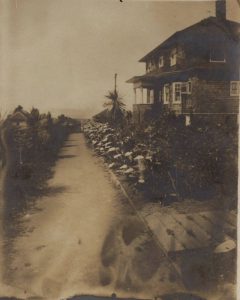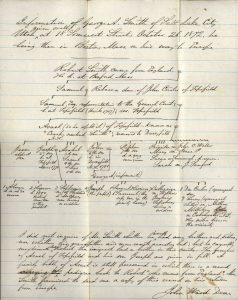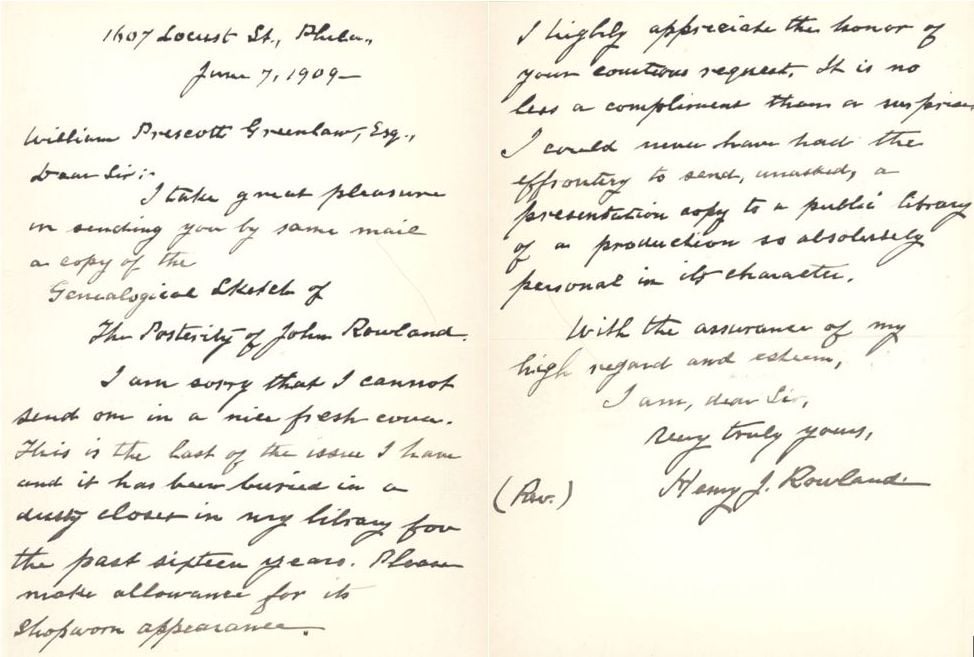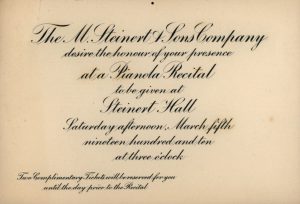When I catalog new books received by the NEHGS library, my normal focus is, naturally, on the contents of the books themselves: the families and places described, the authors, the titles and publication information, and so on. But every now and then, the books we receive contain little “surprises” that go beyond the published words on the page. Over the years, we have found all kinds of objects left in books, from hand-drawn family trees to photographs and calling cards. Some of these items were clearly meant to supplement the books they were left in, and have definite genealogical import; others are only tangentially related to the book’s content. Still others are complete mysteries: we don’t know why they were left in the book, or if they were even left there on purpose.
We recently found an artifact of the first sort – that is, one with genealogical and informational value – in the back of a 1902 genealogy called Asahel Smith of Topsfield, Mass. Though the book had been in our library collection for years, we did not realize – until the book came down to Technical Services for recataloging and preservation – that a little pocket labeled “Notes” had been attached to the inside back cover of the book. Inside of that pocket was a mini-archive of supplemental material, including handwritten notes, newspaper clippings related to the Smith family, and a hand-drawn genealogical chart of the family of Asahel Smith, composed by John Ward Dean (a former editor of the New England Historical and Genealogical Register and longtime Librarian of the Society).
Though the main text of Asahel Smith is already freely available online through Hathi Trust, we plan to digitize the extra materials from the “Notes” pocket that make our copy unique.
Sometimes the items we find tucked between pages or inside covers provide a little extra information about the provenance of the book – that is, where it came from and how it came to be a part of the NEHGS library. For example, in the back of Genealogical Sketch of the Posterity of John Rowland, we found a letter written in 1909 by author Henry J. Rowland presenting the book to William Prescott Greenlaw (another former Librarian for the Society). The letter indicates that it was Greenlaw who contacted Rowland requesting a copy of the book, as Rowland – with almost exaggerated humility – thanks the librarian for the privilege of having his book added to the NEHGS collections:
“I highly appreciate the honor of your courteous request. It is no less a compliment than a surprise. I could never have had the effrontery to send, unasked, a presentation copy to a public library of a production as absolutely personal in its character.”
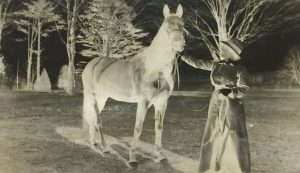 Still other “artifacts” found in the pages of books are more curious than informative. For example, the negative at right depicting an unidentified woman with a horse was found in a local history donated to the collection last year.
Still other “artifacts” found in the pages of books are more curious than informative. For example, the negative at right depicting an unidentified woman with a horse was found in a local history donated to the collection last year.
Since the negative was not accompanied by any kind of note or description, it is difficult to know what (if any) relation it has to the text, or even if the negative was left in the book intentionally. In a similar vein is this recently found invitation to a pianola recital, to be held at three o’clock in the afternoon one day in March 1910:
Who left the invitation in the book, and why? Did the recipient actually go to the recital? Was the invitation left there for some purpose, or was it merely being used as a bookmark? While some artifacts found in books shed light on the past, others remain mysterious.
Share this:
About Emily Baldoni
Emily Baldoni is the Technical Services/Metadata Librarian. She is responsible for creating, maintaining, and enriching metadata for NEHGS print and digital collections. Emily is originally from Normal, Illinois, and joined the NEHGS staff in 2013. She has an M.A. in Comparative Literature from Harvard University and an M.S. in Library and Information Science from Simmons College. Prior to joining the staff at NEHGS, Emily worked for Harvard College Library and EBSCO Information Services.View all posts by Emily Baldoni →
